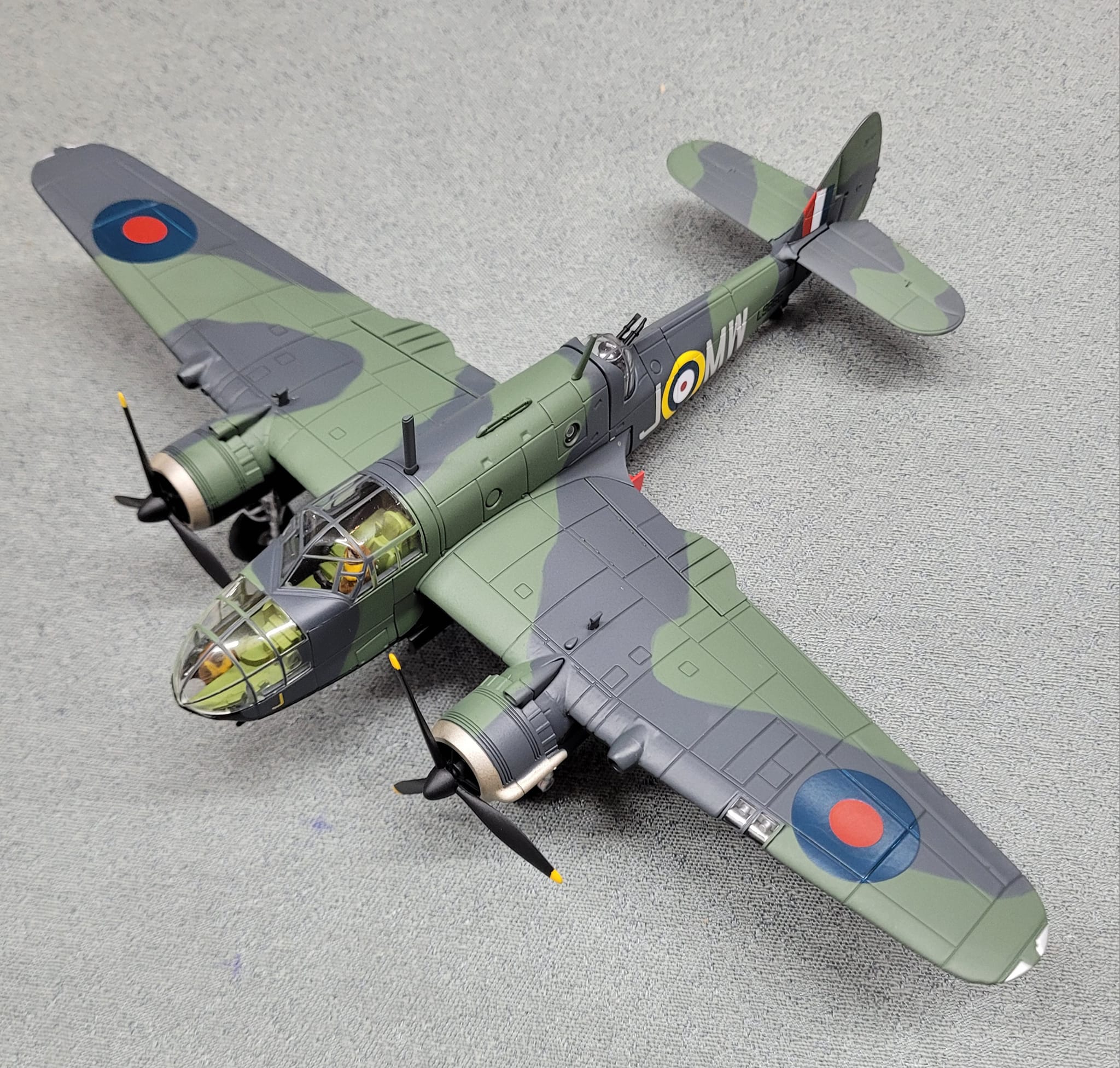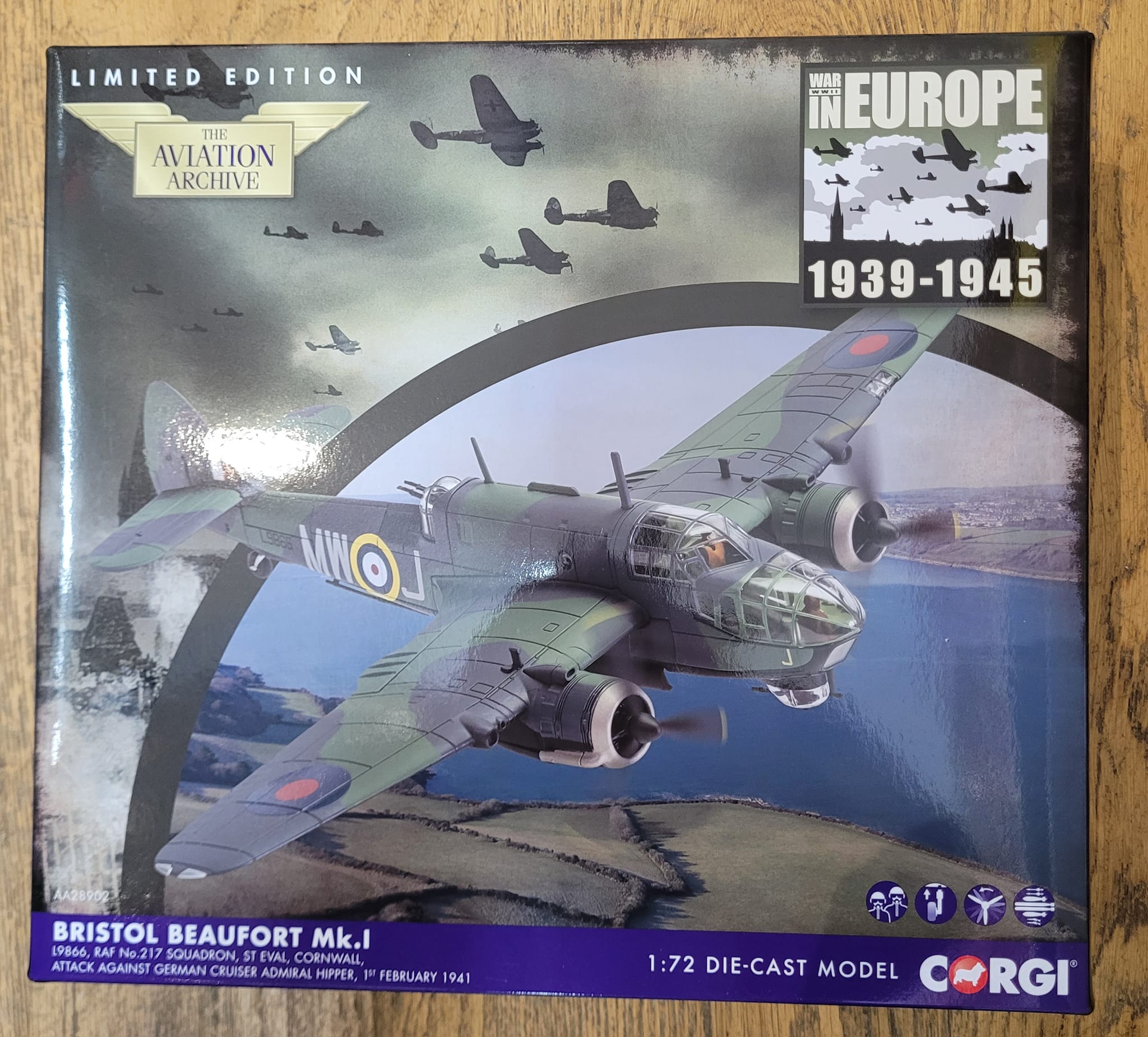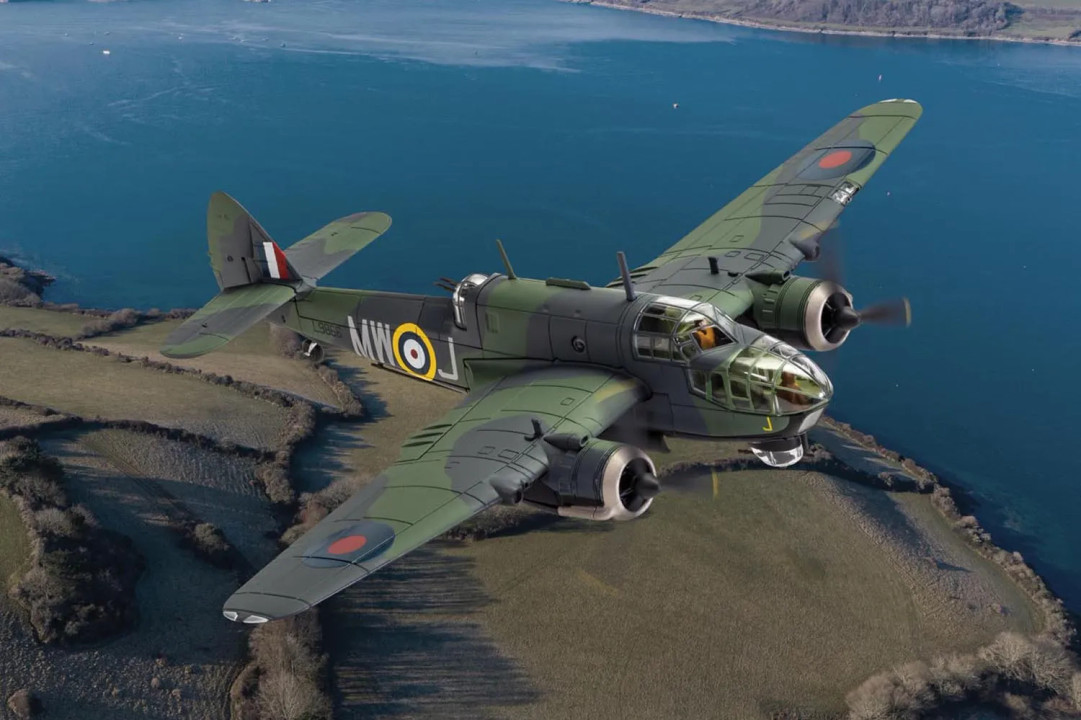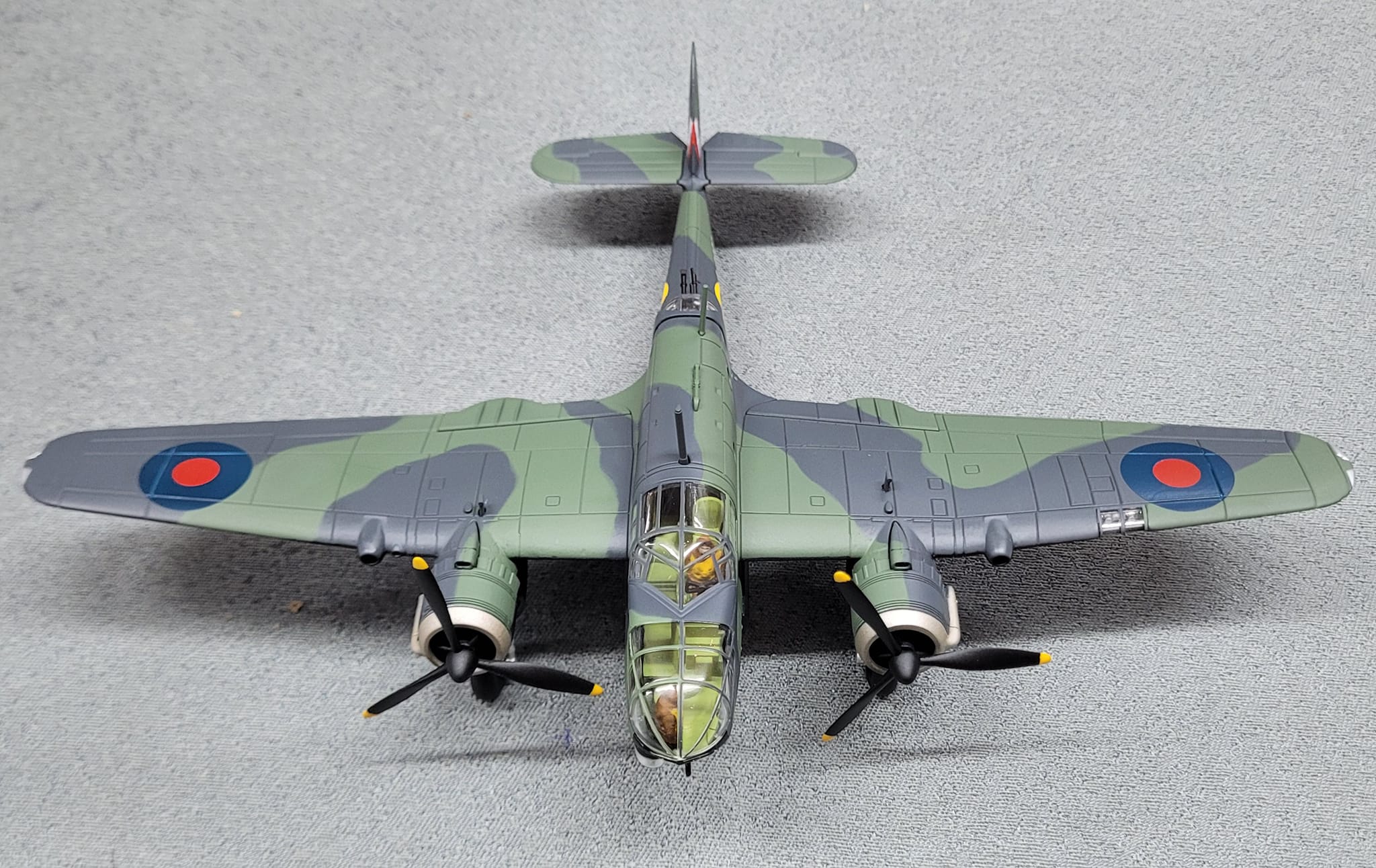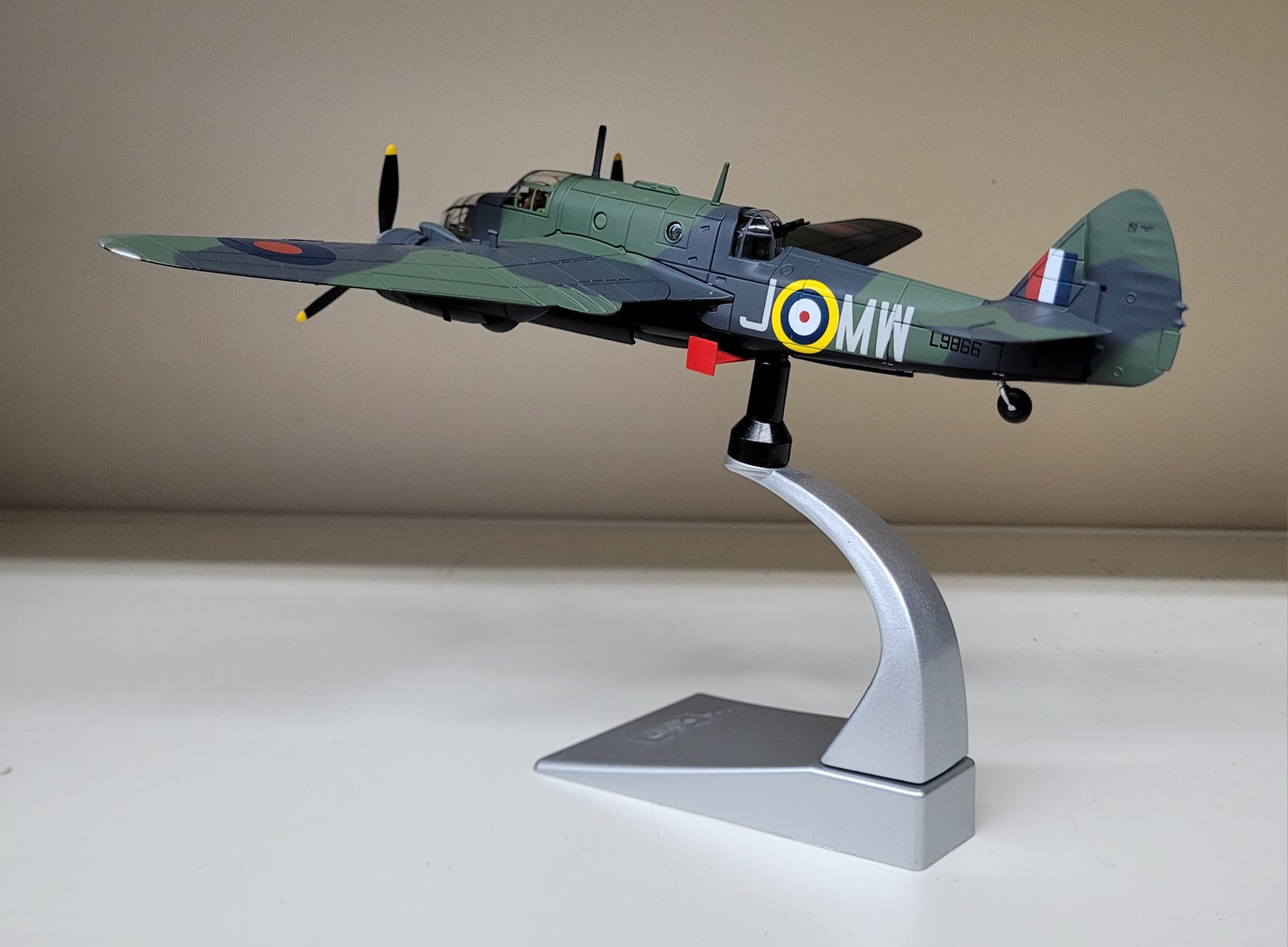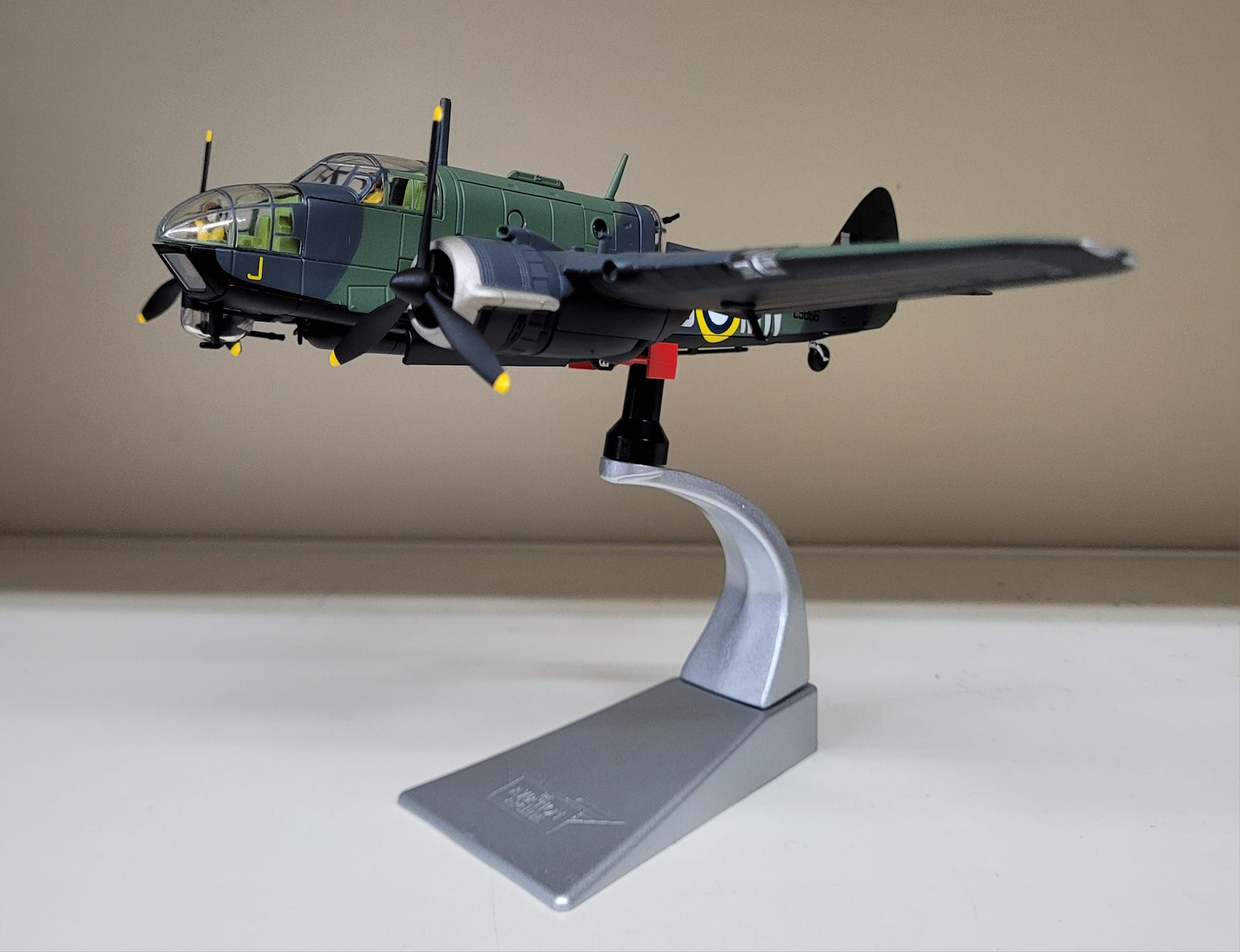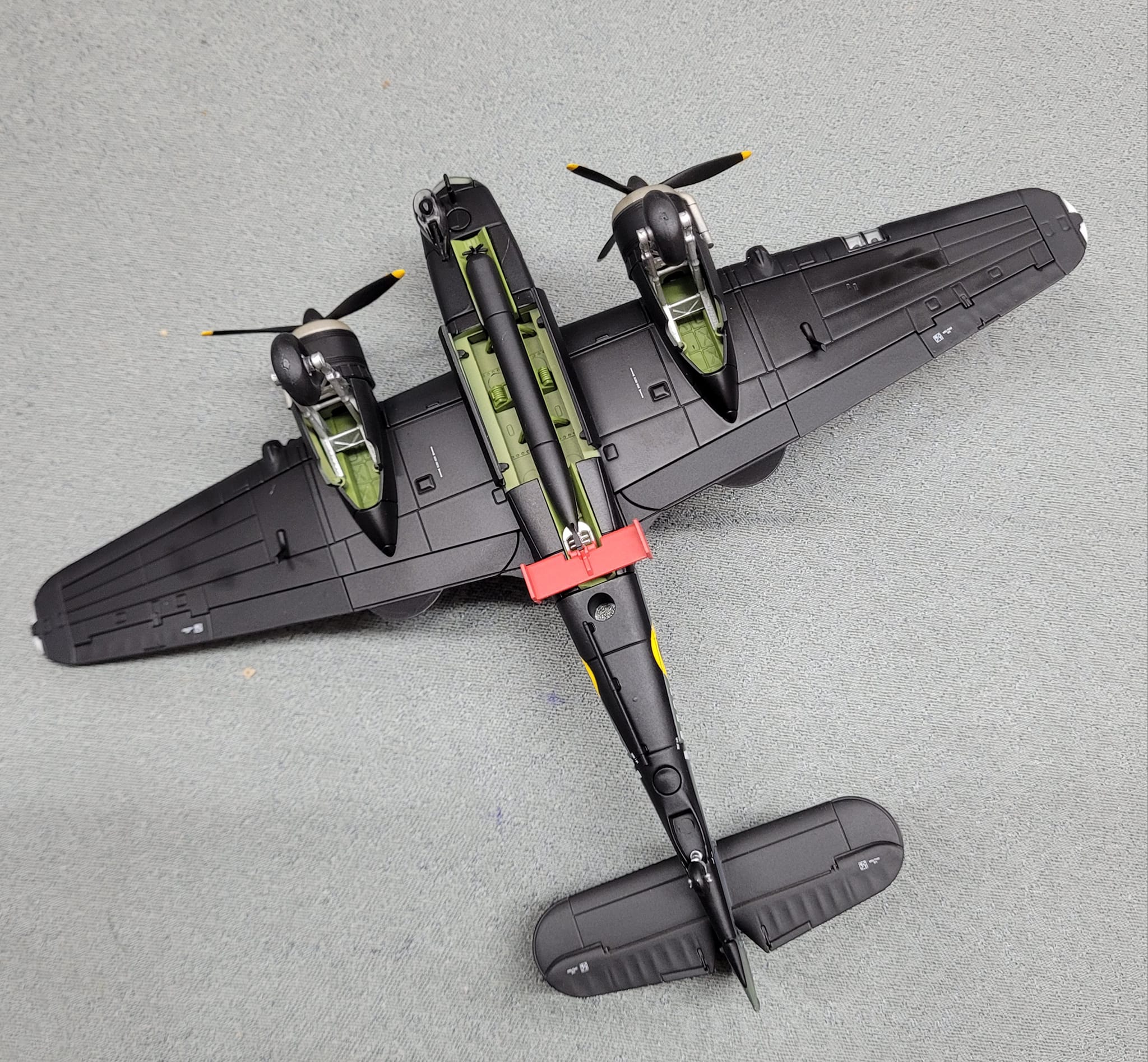Bristol Beaufort Mk.I – 217 Sqn RAF, Admiral Hipper Attack 1941
Add to compare4 in stock
£74.99
4 in stock
Bristol Beaufort Mk.I L9866, of 217 Squadron RAF, St Eval, Cornwall. Part of the attack force against the German Cruiser Admiral Hipper on 1st February 1941. Limited edition of 1,800 models.
Length 7.5 inches Wingspan 9.75 inches
As arguably Britain’s most capable maritime strike aircraft, the Bristol Beaufort was charged with carrying a heavy burden during the early years of the war, particularly when the RAF were engaged in targeting German surface raiders putting into port at Brest for repair and replenishment. Having already taken a heavy toll of Allied shipping during a previous Atlantic patrol, the mighty Admiral Hipper had successfully completed a period of repair in Brest and was almost ready to return to sea once more by the end of January 1941, something the RAF could not allow.
Charged with the task of stopping her, several Beaufort torpedo bombers of 217 Squadron were dispatched from RAF St. Eval in Cornwall just before 15:00 hrs on 1st February 1941, a force which included L9866/MW-J under the command of Sgt John Bell Rutherford. Setting a course for Brest Harbour, the Beaufort crews knew they were headed for one of the most heavily defended locations in Europe, but worse than this, they also knew that as the German ship was about to come under steam, enemy defences would be expecting a visit from the RAF and would be ready for them.
If the British bombers were to successfully press home their attack, they would need much more than just flying skill to survive this withering German defensive onslaught, in addition to the unwanted attentions of the Luftwaffe before and after making their strike run. Admiral Hipper must have been regarded as something of a lucky ship, as it often evaded detection by enemy forces sent to look for it. The ship slipped out of Brest harbour virtually unopposed, in the main, thanks to the many patrols mounted by Luftwaffe fighter units on the day. It is thought that Beaufort L9866 was intercepted and shot down by the Messerschmitt Bf 109E-4 of Uffz Horst Bochmann of II./JG77, with all on board being lost, crashing into the sea off the northern coast of Brittany at around 17.00 hrs. It is thought that due to the location and timing of the incident, the crew had already launched their attack against the Hipper and were heading back to base when they were attacked by Luftwaffe fighters, although this has never been definitively corroborated.
The Luftwaffe airfield at Dinan in Brittany was the home base of II./JG77 and was one of the airfields designated to provide defensive air cover for the vital harbour facilities at Brest. With the Kriegsmarine?s large warships posing a significant threat to the British, Luftwaffe units in this sector would be kept incredibly busy fighting off numerous raids, but as this was one of the most heavily defended areas in Europe, many RAF aircraft would be lost during these operations ? a mission to Brest harbour, or indeed the entire region of Brittany, would have been one fraught with danger.
During the 1930s, the Bristol Aeroplane Company were without doubt one of the most proficient aircraft manufacturers not only in the UK, but in the world. Responsible for producing the RAF?s most important fighter of the decade, the fast and agile Bulldog, the company would also play a significant role in the modern expansion of the Royal Air Force, as their Blenheim light bomber would point to the direction of future military aircraft design. An aircraft which was initially envisaged as an evolutionary development of the Blenheim, the Bristol Beaufort has the distinction of being the only monoplane type produced for the Royal Air Force which was designed from the outset to fulfil the dual roles of torpedo bomber and reconnaissance aircraft.
Highlighting the pressing need for an aircraft possessing these maritime capabilities, the Beaufort was one of only a handful of aircraft to be ordered by the British Air Ministry whilst the project was still on the drawing board; a move which clearly reflected the faith they had in the Bristol Company. The Beaufort may well have started life as a Blenheim development, but it quickly became apparent that the new aircraft would look quite different to its predecessor. With a much deeper front fuselage section needed to accommodate its crew of four and the requirement to carry a torpedo in a semi-recessed position under the fuselage, a gross weight increase of around 25 percent over the Blenheim ensured that whilst the two aircraft may have been related in aviation terms, they most certainly could not be described as twins.
Historically, the demanding specifications the Beaufort was required to satisfy, in conjunction with Bristol?s existing Blenheim manufacturing commitments, dictated that an aircraft which had production contracts initially signed in August 1936 would not actually see its squadron introduction until almost three and a half years later, when Britain was already at war. Once in squadron service, the Beaufort quickly proved to be an extremely rugged and highly manoeuvrable aircraft, one which would be tasked with performing some of the most demanding strike attack missions of the war.
| Weight | 1.8 kg |
|---|

